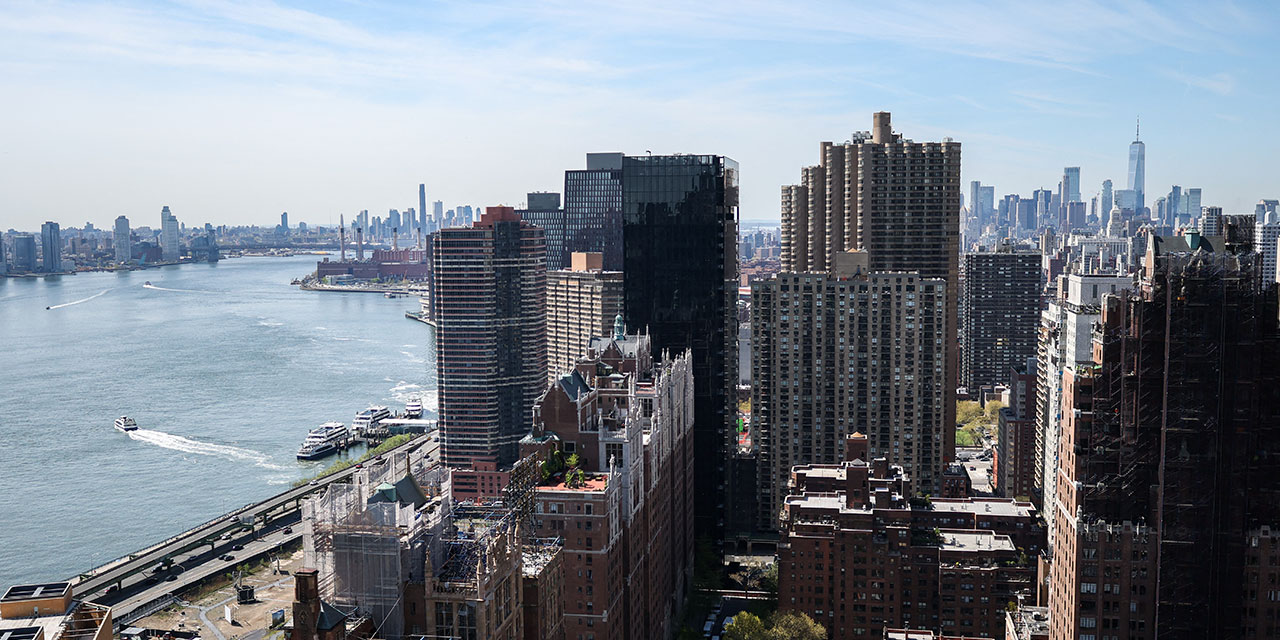
New York City has a critical housing shortage, as shown by its extremely low rental vacancy rates and record rents. Unfortunately, the front-runner mayoral candidate and the most competitive runners-up aren’t serious about addressing this crisis.
When a city has greater housing demand than supply, it can escape this bind either by suppressing demand or increasing supply. New York City does neither. Instead, it pumps up demand through draconian rent controls, which keep tenants in place who might otherwise move to someplace cheaper. One might expect city and state politicians to expand supply to balance this tenant-friendly policy, but their response has long fallen short. For decades, the city has tolerated restrictive zoning, while relying on costly public subsidies for below-market housing to close the gap.
Finally, a reason to check your email.
Sign up for our free newsletter today.
Eric Adams, the incumbent mayor running for reelection as an independent, has continued the high-spending tradition. But he has also proposed a meaningful zoning reform—the City of Yes plan—enacted with the support of a Democratic primary mayoral candidate, City Council Speaker Adrienne Adams.
As his first term ends, Adams has advanced for public review a series of local zoning changes aimed at expanding both market-rate and legally required below-market-rent housing through the city’s Mandatory Inclusionary Housing (MIH) program. That program’s viability depends on a property tax exemption passed by the state legislature last year, “Section 485-x,” which helps developers offset the costs of providing affordable housing.
The exemption, however, is a reliable incentive only in neighborhoods with strong housing markets and for projects with fewer than 100 units. For larger buildings, the law triggers “prevailing wage” requirements for construction workers. For developers, this erodes much of the exemption’s value and renders much new development financially unworkable, even where rents are high.
The combination of MIH and 485-x leaves many proposed buildings searching for subsidies, ratcheting up the demand for more public spending. Since the city’s resources can never keep up, housing supply remains suppressed, despite progress made under Adams’s mayoralty.
It’s no mystery why this dysfunction endures. Most New York City residents benefit—whether through regulated rents, subsidized housing, low property taxes on small homes, co-ops, and condominiums, rising real estate values for incumbent homeowners, employment in public agencies, or the billions spent on affordable housing for nonprofit and for-profit developers and building managers. New Yorkers consistently vote for Democratic politicians who promise to protect these benefits. Those who don’t qualify—or who can’t afford the city’s expensive private housing—move elsewhere. Their votes no longer register with New York’s political class.
Imagine what might happen if a large, new population were permitted to move into newly built, unregulated, unsubsidized apartment buildings across the five boroughs. These newcomers wouldn’t feel dependent on the survival of the current Democratic supermajorities at city and state levels. They might vote based on other priorities—such as lower taxes or more efficient public services. New political factions, either within or outside the Democratic Party, might emerge to champion those goals. Such competition would threaten current politicians’ incumbency—something most would never tolerate.
The current Democratic primary candidates don’t operate in that world, even if they’ve signaled some willingness to pursue reform. Frontrunner Andrew Cuomo—who, as governor, signed the Housing Stability and Tenant Protection Act of 2019 (HSTPA), the onerous rent-regulation law that predictably caused a disastrous drop in vacant units for rent—correctly acknowledges that “market rate housing has a role . . . and New York should welcome residents who bring badly needed economic resources to the City.” But his plan advocates yet more public spending on affordable housing, as if the city’s already vast commitment of public resources to such projects weren’t enough. Further, Cuomo vows to “strengthen” tenant protections, not reform them.
Of the mayoral also-rans, long-shot Whitney Tilson has the most thoughtful housing positions. He pledges zoning reform and dares to touch the rent-regulation third rail, proposing to amend the HSTPA so landlords can earn a fair return on investments to renovate vacant apartments.
State Senator Zellnor Myrie, polling just a bit better, proposes to build 700,000 new housing units in a decade. His biggest innovations: proposed rezonings for “mixed-income” housing and a pledge to apply MIH’s high affordable-housing mandates only in Midtown Manhattan. That suggests Myrie is open to doing what’s necessary to boost supply: adjusting affordability mandates in other parts of the city downward to fit economic realities, so that more housing gets built.
Myrie is less sensible on rent regulation, having been a leading advocate of the HSTPA in 2019. He is one of four candidates—along with Assemblyman Zohran Mamdani, Speaker Adrienne Adams, and Comptroller Brad Lander—who have backed a rent freeze this year, despite rising costs and the clear financial distress facing many rent-regulated buildings.
Some candidates claim to understand the problem and pay at least lip service to private-sector solutions. But none is prepared to tell voters the hard truth: that they—the privileged beneficiaries of decades of spending, tax distortions, and housing regulation—must make room for a new generation of young adults who want to live in New York City, even if that means giving up some of their advantages. The alternative isn’t equality or fairness but greater inequality, more homelessness, and the city’s continued decline in economic relevance.
New Yorkers who want to avoid that outcome should support efforts, such as city charter reform, to ensure that future mayoral candidates offer better choices.
Photo by CHARLY TRIBALLEAU/AFP via Getty Images
City Journal is a publication of the Manhattan Institute for Policy Research (MI), a leading free-market think tank. Are you interested in supporting the magazine? As a 501(c)(3) nonprofit, donations in support of MI and City Journal are fully tax-deductible as provided by law (EIN #13-2912529).
Source link















